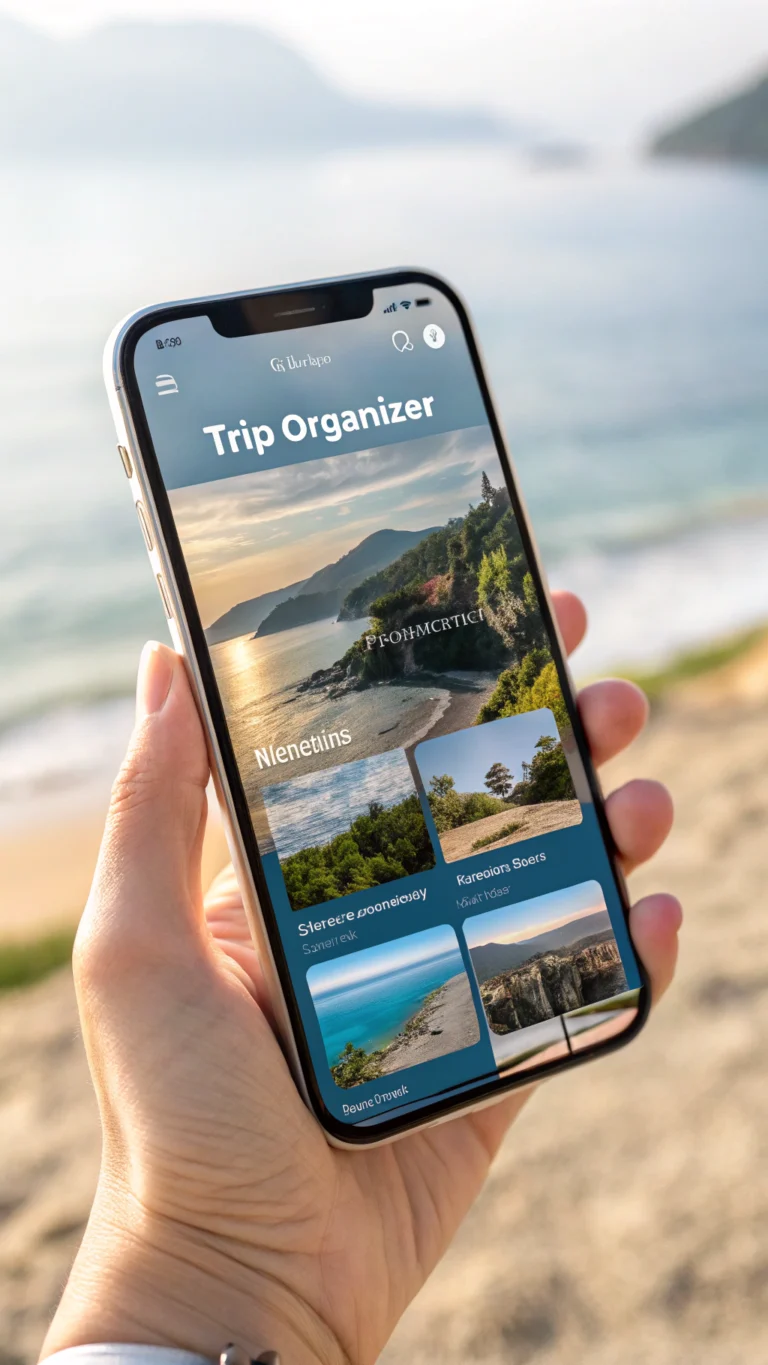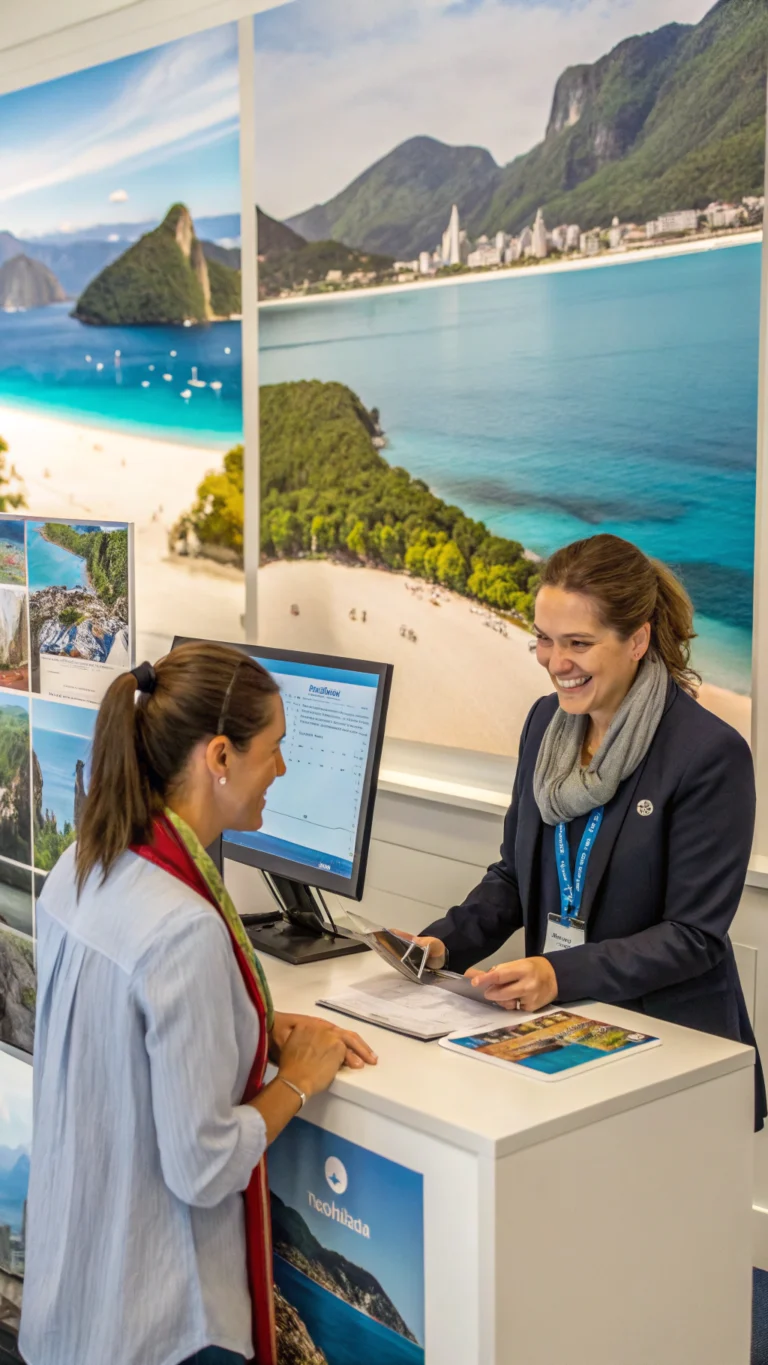Everything You Need to Know About Digital Nomad Visas
The concept of working remotely has gained immense popularity, and with it, the rise of digital nomad visas has become a significant trend. These visas cater to individuals who wish to work from various locations around the world, embracing the digital nomad lifestyle.

Everything You Need to Know About Digital Nomad Visas in 2025
Want to work remotely while living abroad? A digital nomad visa lets you legally stay in another country while continuing your remote job or freelance work online. Whether you’re a freelancer, entrepreneur, or remote employee, these visas offer a new way to explore the world without putting your career on hold.
With more countries offering remote work visa programs, understanding the requirements, benefits, and how to apply is essential. From income thresholds to health insurance and tax rules, each country has its own set of criteria.
Key Takeaways
- Digital nomad visas enable remote work in foreign countries.
- Understanding nomad visa requirements is essential.
- The digital nomad lifestyle offers cultural immersion and career flexibility.
- Remote work visas provide legal residency in host countries.
- Researching visa options is crucial for a seamless transition.
What Are Digital Nomad Visas?
The rise of remote work has led to a surge in demand for digital nomad visas, which provide a legal framework for individuals to work abroad. As more countries introduce these visas, it’s essential to understand their definition, purpose, and how they differ from other types of visas.
Definition and Purpose
A digital nomad visa is a type of visa that allows individuals to live and work in a foreign country, typically for an extended period. The digital nomad visa definition encompasses a legal status that enables remote workers to reside in a country while maintaining their employment or business outside that country. The primary purpose of these visas is to attract remote workers who can contribute to the local economy without taking jobs away from local residents.
The benefits of digital nomad visas include:
- Legal status to live and work in a foreign country
- Extended stay periods compared to tourist visas
- Potential tax advantages, depending on the country’s regulations
How Digital Nomad Visas Differ from Tourist and Work Visas
Understanding the difference between digital nomad, tourist, and work visas is crucial before planning your remote work abroad.
Digital nomad visas are specifically created for remote workers, allowing them to legally live in a foreign country while working online for clients or companies outside that country. Here’s how they compare:
1. Purpose
- Digital Nomad Visa: Tailored for remote workers, freelancers, and entrepreneurs working online.
- Tourist Visa: Intended for short-term travel, sightseeing, or visiting friends and family—no work is permitted.
- Work Visa: Requires a job offer from a local company and is meant for in-country employment.
2. Duration
- Digital Nomad Visas: Typically offer stays ranging from 6 months to 2 years, often with renewal options.
- Tourist Visas: Usually limited to 30–90 days.
- Work Visas: Vary by country but generally tied to the duration of the employment contract.
3. Employment Requirements
- Digital Nomad Visa: No need for local employment; income must come from outside the host country.
- Tourist Visa: Employment of any kind is usually prohibited.
- Work Visa: Requires a valid job offer from a local employer and often sponsorship.
The Rise of Digital Nomadism and Remote Work
The COVID-19 pandemic has accelerated the shift towards remote work, paving the way for the rise of digital nomadism. As a result, the traditional office environment has given way to a more flexible, location-independent work culture.
Post-Pandemic Shift in Work Culture
The pandemic has fundamentally changed how we work, with many companies adopting remote work policies. This shift has enabled professionals to work from anywhere, leading to an increase in digital nomadism. Remote work trends are expected to continue, with many businesses embracing the flexibility it offers.
Why Countries Are Creating Digital Nomad Programs
Countries are now creating digital nomad programs to attract remote workers, offering visa incentives and other benefits. These programs aim to boost local economies by attracting individuals who can work independently and contribute to the local community. The rise of digital nomadism has become an opportunity for countries to revitalize their economies and promote cultural exchange.
By embracing digital nomadism, countries can tap into a global talent pool, fostering innovation and growth. As the world continues to adapt to the post-pandemic reality, the trend towards remote work and digital nomadism is likely to persist.
Benefits of Digital Nomad Visas
For many, obtaining a digital nomad visa is a gateway to a more stable and secure lifestyle abroad. This type of visa offers numerous benefits that cater to the unique needs of remote workers.
Legal Status and Extended Stays
A digital nomad visa provides legal status in a foreign country, allowing individuals to stay for extended periods without the fear of overstaying a tourist visa. This stability is crucial for planning long-term stays and integrating into local communities.
Tax Advantages
Many countries offering digital nomad visas also provide tax advantages. For instance, some nations have tax exemptions or reduced tax rates for foreign-earned income, which can significantly benefit digital nomads. Understanding these tax benefits is essential for maximizing one’s financial situation.
Access to Local Services and Banking
With a digital nomad visa, individuals can more easily access local services, including banking. Opening a local bank account becomes simpler, facilitating daily financial transactions and reducing reliance on international banking services that often come with higher fees.
To illustrate the benefits, consider the following comparison of banking services for digital nomads in various countries:
| Country | Banking Services for Digital Nomads | Annual Fees |
| Portugal | Easy account opening, online banking | $100-$300 |
| Thailand | Local bank accounts available, ATM access | $50-$200 |
| Estonia | Digital banking services, e-residency benefits | $0-$100 |
In conclusion, digital nomad visas offer a range of benefits that enhance the lifestyle and financial security of remote workers. By providing legal status, tax advantages, and access to local services, these visas make it easier for individuals to navigate their new environments.
Common Requirements for Digital Nomad Visas
To successfully apply for a digital nomad visa, applicants must fulfill certain common requirements that may vary slightly from one country to another.
The requirements for digital nomad visas are designed to ensure that applicants can support themselves financially and contribute to the local economy without posing a risk to public health or safety. These requirements typically include income thresholds, health insurance coverage, background checks, and verification of remote employment.
Income Requirements
Most countries offering digital nomad visas have minimum income requirements that applicants must meet to qualify. For instance, some countries require applicants to demonstrate a monthly income of at least $2,000 to $3,000. This ensures that digital nomads can support themselves without becoming a burden on the local social services.
Key Requirements for a Digital Nomad Visa
While digital nomad visa requirements vary by country, most programs share common criteria. Meeting these is essential for a successful application and a smooth remote work experience abroad.
Health Insurance Coverage
One of the most important requirements is having valid international health insurance. Most countries mandate that your policy:
- Covers the entire duration of your stay.
- Meets a minimum coverage amount, which can differ by country.
- Includes emergency medical care, hospitalization, and sometimes COVID-19 treatment.
This ensures you won’t burden the local healthcare system and that you’re protected in case of illness or injury.
Background Checks and Required Documents
To maintain security and transparency, many digital nomad visa programs require:
- A clean criminal record, verified through a background check.
- A valid passport with sufficient validity.
- Proof of income (e.g., bank statements or client invoices).
- Health insurance documentation that meets the host country’s requirements.
Remote Employment or Business Verification
To prove you’re eligible, you must show that you’re employed remotely or running an online business. Commonly accepted documents include:
- Remote employment contracts or client agreements.
- Payslips or recent invoices.
- A business plan if you’re self-employed or a freelancer.
📋 Checklist for a Successful Application
Before you apply, make sure you:
- Meet the income threshold set by the country.
- Have valid health insurance with the required coverage.
- Gather all supporting documents, including proof of employment and identification.
Everything You Need to Know About Digital Nomad Visa Application Processes
Navigating the digital nomad visa application process can be complex, but understanding the steps involved can significantly ease the journey. As digital nomadism continues to gain popularity, more countries are introducing specific visa programs tailored to remote workers. However, the application process can vary significantly from one country to another.
Step-by-Step Application Guide
The first step in applying for a digital nomad visa is to research the specific requirements of the country you’re interested in. This includes understanding the necessary documentation, such as proof of income, health insurance, and background checks. Most countries require applicants to demonstrate a steady income that meets or exceeds a certain threshold, often around $2,000 to $3,000 per month.
Once you’ve gathered all the necessary documents, the next step is to submit your application. This can usually be done online through the country’s immigration website or through a designated application portal. It’s crucial to ensure that all information is accurate and that you have all required documents before submission.
After submitting your application, you’ll typically need to wait for it to be processed. Processing times can vary widely, from a few weeks to several months. Some countries offer expedited processing for an additional fee.
Common Pitfalls to Avoid
One of the most common pitfalls in digital nomad visa applications is failing to meet the income requirement. Ensure you have proof of steady income that meets the host country’s threshold. Another mistake is not having adequate health insurance that covers you in the host country. Additionally, failing to provide thorough documentation or making errors on the application form can lead to delays or rejection.
Processing Times and Success Rates
Processing times for digital nomad visas can range from a few weeks to several months. Countries with high demand for digital nomads, like Estonia and Barbados, often have more streamlined processes. Success rates also vary; some countries have a high approval rate due to straightforward application processes, while others may be more stringent.
Understanding these aspects of the digital nomad visa application process can significantly improve your chances of a successful application. By being well-prepared and aware of the common pitfalls, you can navigate this process more effectively.
Top Countries Offering Digital Nomad Visas
The rise of digital nomadism has prompted many countries to introduce specialized visas for remote professionals. This shift is driven by the desire to attract talented individuals who can contribute to local economies while exploring new cultures.

European Options
Europe has been at the forefront of embracing digital nomadism, with several countries offering attractive visa programs.
Portugal’s D7 Visa and Digital Nomad Visa
Portugal’s D7 Visa is a popular choice, offering a straightforward application process and a relatively low income requirement. It’s ideal for those who want to experience European culture while maintaining their remote work lifestyle.
Croatia’s Digital Nomad Residence Permit
Croatia has introduced a digital nomad residence permit, allowing remote workers to stay for up to one year. This permit is particularly appealing due to Croatia’s stunning landscapes and vibrant culture.
Estonia’s Digital Nomad Visa
Estonia’s digital nomad visa offers a unique opportunity to experience life in a tech-savvy nation. The visa allows for a stay of up to one year, with the possibility of renewal.
Spain, Greece, and Italy’s Programs
Spain, Greece, and Italy are also making it easier for digital nomads to live and work within their borders. Each country has its unique charm and attractions, making them popular destinations.
Caribbean and Latin American Options
The Caribbean and Latin America are becoming increasingly popular among digital nomads, thanks to their welcoming cultures and stunning natural beauty.
Barbados Welcome Stamp
The Barbados Welcome Stamp allows remote workers to live and work on the island for up to 12 months. This visa is particularly attractive due to Barbados’s beautiful beaches and vibrant culture.
Costa Rica’s Rentista Visa
Costa Rica’s Rentista Visa is designed for individuals with a stable income from outside Costa Rica. It’s a great option for those looking to experience the country’s rich biodiversity.
Mexico’s Temporary Resident Visa
Mexico’s Temporary Resident Visa is a flexible option for digital nomads, allowing stays of up to one year. Mexico offers a rich cultural experience and a relatively low cost of living.
Panama, Ecuador, and Colombia’s Options
Panama, Ecuador, and Colombia are also offering various visa options for digital nomads. These countries provide a mix of urban excitement and natural beauty, making them appealing destinations.
Asian and Pacific Options
Asia and the Pacific are emerging as significant hubs for digital nomads, with several countries offering attractive visa programs.
Thailand’s Long-Term Resident Visa
Thailand’s Long-Term Resident Visa is designed to attract remote workers and digital nomads. This visa offers a range of benefits, including tax incentives and a streamlined application process.
Dubai’s Remote Work Visa and Other Options
Dubai has introduced a remote work visa, making it easier for digital nomads to live and work in the UAE. Dubai’s modern infrastructure and business-friendly environment make it an attractive destination.
African Options
Africa is also becoming a hotspot for digital nomads, with several countries offering innovative visa programs.
Mauritius Premium Travel Visa
The Mauritius Premium Travel Visa allows remote workers to stay on the island for up to one year. Mauritius offers a unique blend of African and international culture, along with stunning beaches.
Other African Digital Nomad Destinations
Other African countries, such as South Africa and Seychelles, are also exploring digital nomad visa options. These destinations offer a mix of urban excitement and natural beauty.
Costs and Financial Considerations
Financial planning is a critical aspect of the digital nomad lifestyle, encompassing visa fees, living costs, and more. As you consider applying for a digital nomad visa, understanding the various expenses involved can help you make informed decisions about your destination and lifestyle.
Application and Visa Fees by Region
The cost of applying for a digital nomad visa varies significantly across different regions. For instance, some European countries offer relatively affordable options, with application fees ranging from $50 to $200. In contrast, certain countries in the Caribbean or Latin America might charge higher fees, sometimes upwards of $500 or more, depending on the specific requirements and benefits of the visa program.
Cost of Living Comparisons
The cost of living is another crucial factor to consider when choosing a destination. Countries with a lower cost of living, such as those in Southeast Asia or parts of Latin America, can offer digital nomads a comfortable lifestyle at a relatively low expense. For example, renting a one-bedroom apartment in Chiang Mai, Thailand, can cost between $200 to $400 per month, whereas a similar apartment in major European cities could cost $800 to $1,500 or more.
Banking, Taxes, and Currency Exchange Tips
Managing your finances abroad requires some additional planning. It’s essential to have a clear understanding of your tax obligations, both in your home country and your host country. Some countries have tax exemptions or reduced rates for digital nomads. Additionally, using a banking service that offers low or no foreign transaction fees can save you money. Being mindful of currency exchange rates and using reputable services for transferring money can also help minimize losses.
By carefully considering these financial aspects, digital nomads can better navigate the complexities of living and working abroad, ensuring a more sustainable and enjoyable experience.
Practical Tips for Digital Nomad Visa Holders
Embracing the digital nomad lifestyle requires more than just a visa; it demands practical strategies for daily living. As you settle into your new environment, several factors can enhance your experience and make your transition smoother.
Accommodation Strategies
Finding the right accommodation is crucial for digital nomads. It’s essential to research neighborhoods, considering factors like safety, proximity to coworking spaces, and access to amenities. Short-term rentals can be a good starting point, allowing you to get familiar with the area before committing to a longer lease. Websites like Airbnb or local real estate platforms can be invaluable resources.
For a more immersive experience, consider house-sitting or co-living spaces. These options not only provide accommodation but also opportunities to connect with like-minded individuals. When choosing accommodation, it’s also worth thinking about the cost of living and ensuring it aligns with your budget.

Building Community Abroad
Building a community is vital for digital nomads to combat loneliness and stay connected. Joining local coworking spaces is an excellent way to meet other remote workers and entrepreneurs. Many cities also have groups or clubs for digital nomads, which can be found through social media or local event listings.
Attending networking events or workshops related to your field can also help you build a professional network abroad. Moreover, participating in local activities or volunteering can enrich your experience and provide a sense of belonging.
Family Considerations and Dependent Visas
For digital nomads traveling with family, additional considerations come into play. Ensuring that your dependent visa applications are processed correctly is crucial. Research the specific requirements for dependent visas in your host country, as these can vary significantly.
When moving with family, it’s also important to consider schooling options and healthcare for your dependents. Some countries offer international schools or have specific programs for expat children. Understanding the local healthcare system and ensuring you have adequate health insurance coverage for your family is also vital.
| Aspect | Considerations | Tips |
| Accommodation | Safety, cost, proximity to amenities | Research neighborhoods, consider short-term rentals |
| Community Building | Coworking spaces, social events | Join local groups, attend networking events |
| Family Considerations | Dependent visas, schooling, healthcare | Research visa requirements, explore international schools, ensure health insurance coverage |
Conclusion
As the world continues to adapt to the evolving landscape of remote work, digital nomad visas have emerged as a vital component for individuals seeking to blend work and travel. The benefits of these visas, including legal status, tax advantages, and access to local services, have made them increasingly popular among remote workers.
The future of digital nomadism looks promising, with more countries introducing specialized visa programs to attract global talent. As remote work trends continue to shift, it’s likely that we’ll see further innovations in visa policies, making it easier for digital nomads to navigate the complexities of working abroad.
For those considering a digital nomad lifestyle, understanding the requirements and benefits of these visas is crucial. By doing so, individuals can make informed decisions about their career and travel plans, embracing the freedom and flexibility that comes with remote work. As the world becomes more interconnected, the rise of digital nomadism is set to continue, offering a new paradigm for work and travel.
FAQ
What is a digital nomad visa?
A digital nomad visa is a type of visa that allows remote workers to live and work in a foreign country for an extended period, typically with certain requirements such as income thresholds and health insurance.
How do digital nomad visas differ from tourist visas?
Digital nomad visas are designed for remote workers who want to stay in a country for longer than a tourist visa allows, often providing a more stable and secure status, whereas tourist visas are typically for short-term stays and may not permit work.
What are the common requirements for digital nomad visas?
Common requirements include income requirements, health insurance coverage, background checks, and verification of remote employment, though specific requirements vary by country.
Can I apply for a digital nomad visa if I’m self-employed?
Yes, many countries allow self-employed individuals to apply for digital nomad visas, but you may need to provide additional documentation, such as business registration and financial statements.
How long does it take to process a digital nomad visa application?
Processing times vary by country, ranging from a few weeks to several months, so it’s essential to check the specific requirements and timelines for your chosen destination.
Do digital nomad visas offer tax advantages?
Some countries offer tax benefits or exemptions for digital nomad visa holders, but tax implications depend on individual circumstances, so it’s crucial to consult a tax professional.
Can I bring my family with me on a digital nomad visa?
Many countries allow digital nomad visa holders to bring dependents, but you may need to apply for dependent visas, which often have additional requirements, such as proof of income and health insurance.
What are the costs associated with digital nomad visas?
Costs include application fees, visa fees, and potentially other expenses like health insurance, with costs varying significantly by country and region.
How do I choose the best country for a digital nomad visa?
Consider factors like cost of living, culture, language, and visa requirements when choosing a destination, and research the specific digital nomad visa programs available.
Are there any restrictions on work while holding a digital nomad visa?
Some countries impose restrictions on the type of work or clients you can have while on a digital nomad visa, so it’s essential to understand the terms and conditions of your visa.
What happens if my digital nomad visa application is rejected?
If your application is rejected, you can often appeal or reapply, addressing the reasons for the initial rejection, or consider alternative visa options or destinations.






